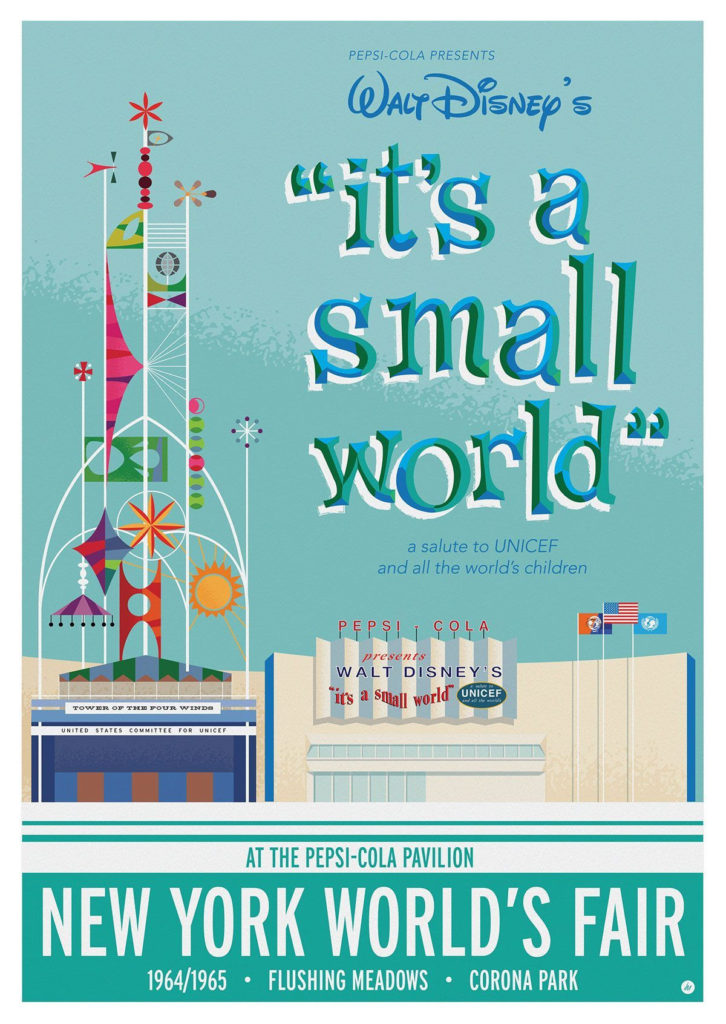Thursday, May 21, 2020 – Time to go to the Beach on Long Island

THURSDAY
May 21, 2020
RIHS’s 57th Issue of

MORE TRIPS TO THE
BEACH
TIME TO WALK THE BOARDWALK
or Take a Walk at the
1964-65 World’s Fair

LONG BEACH
Through the 19th century Long Beach’s first inhabitants were the Algonquian-speaking Rockaway Indians, who sold the area to English colonists in 1643.
From that time, while the barrier island was used by baymen and farmers for fishing and harvesting salt hay, no one lived there year-round for more than two centuries. In 1837, the barque Mexico, carrying Irish immigrants to New York, ran ashore on New Year’s Day.[citation needed] In 1849, Congress established a lifesaving station.
Austin Corbin, a builder from Brooklyn, was the first to attempt to develop the island as a resort. He formed a partnership with the Long Island Rail Road (LIRR) to finance the New York and Long Beach Railroad Co., which laid track from Lynbrook to Long Beach in 1880.
That same year, Corbin opened Long Beach Hotel, a row of 27 cottages along a 1,100-foot (340 m) strip of beach, which he claimed was the world’s largest hotel.In its first season, the railroad brought 300,000 visitors to Long Island. By the next spring, tracks had been laid the length of the island, but they were removed in 1894 after repeated washouts from winter storms. Long Beach Hotel Long Beach boardwalk,
In 1906, William Reynolds, a 39-year-old real estate developer and former State Senator, entered the picture. Reynolds had already developed four Brooklyn neighborhoods (Bedford–Stuyvesant, Borough Park, Bensonhurst, and South Brownsville), as well as Coney Island’s Dreamland, the world’s largest amusement park. Reynolds also owned a theater and produced plays. He gathered investors, and acquired the oceanfront from private owners and the rest of the island from the Town of Hempstead in 1907; he planned to build a boardwalk, homes, and hotels.
Reynolds had a herd of elephants marched in from Dreamland, ostensibly to help build the Long Beach Boardwalk; he had created an effective publicity stunt. Dredges created a channel 1,000 feet (300 m) wide on the north side of the island to provide access by large steamboats and sea planes to transport more visitors; the new waterway was named Reynolds Channel. To ensure that Long Beach lived up to his billing it “The Riviera of the East”, he required each building to be constructed in an “eclectic Mediterranean style”, with white stucco walls and red-clay tile roofs. He built a theater called Castles by the Sea, with the largest dance floor in the world, for dancers Vernon and Irene Castle.
After Reynolds’ corporation went bankrupt in 1918, the restrictions were lifted. The new town attracted wealthy businessmen and entertainers from New York and Hollywood. On July 29, 1907, a fire broke out at the Long Beach Hotel and burned it to the ground. Of the 800 guests, eight were injured by jumping from windows, and one woman died. The fire was blamed on defective electric wiring. A church, several cottages and the bathing pavilion were also destroyed. Trunks belonging to the guests, which had been piled on the sand to form “dressing rooms”, were looted by thieves. A dozen waiters and others were apprehended by the police, who recovered $20,000 worth of jewelry and other stolen property.
The community became an incorporated village in 1913 and a city in 1922
In 1923, the prohibition agents known simply as Izzy and Moe raided the Nassau Hotel and arrested three men for bootlegging. In 1930, five Long Beach Police officers were charged with offering a bribe to a United States Coast Guard officer to allow liquor to be landed. The police had another problem a year later in the summer of 1931, when a beachcomber found the body of a young woman named Starr Faithfull, who had drowned. She had left behind a suicide note, but others believed she had been murdered, and the circumstances of her death were never resolved.
Corruption became rampant in Long Beach by then; in 1922, the state Legislature designated Long Beach a city and William H. Reynolds was elected the first mayor. Soon afterward, Reynolds was indicted on charges of misappropriating funds. When he was found guilty, the clock in the tower at city hall was stopped in protest. When a judge released Reynolds from jail later that year on appeal, almost the entire population turned out to greet him, and the clock was turned back on. On November 15, 1939, Mayor Louis F. Edwards was fatally shot by a police officer in front of his home. Officer Alvin Dooley, a member of the police motorcycle squad and the mayor’s own security detail, killed Edwards after losing his bid for PBA president to a candidate the mayor supported. Jackson Boulevard was later renamed Edwards Boulevard in honor of the late mayor. After the murder, the city residents passed legislation to adopt a city manager system, which still exists to this day. The city manager is hired by and reports to the City Council.
In the 1940s, José Ferrer, Zero Mostel, Mae West, and other famous actors performed at local theaters. ] John Barrymore, Humphrey Bogart, Clara Bow, James Cagney, Cab Calloway, Jack Dempsey, Lillian Roth, Rudolph Valentino, and Florenz Ziegfeld lived in Long Beach for decades.[9]

THE SCANDALS AND CORRUPTION CONTINUE WITH SOME OF THE SAME CAST OF CHARACTERS FROM BROOKLYN!



A REQUIRED STOP ON THE WAY HOME FROM THE BEACH. HOT DOGS WITH A SIDE OF SAND
JONES BEACH STATE PARK
The park was created during Robert Moses’ administration as President of the Long Island State Park Commission as part of the development of parkways on Long Island. Moses’ first major public project, Jones Beach is free from housing developments and private clubs, and instead is open for the general public. Several homes on High Hill Beach were barged further down the island to West Gilgo Beach to make room for the park.
When Moses’ group first surveyed Jones Island, it was swampy and only two feet (0.61 m) above sea level; the island frequently became completely submerged during storms. To create the park, huge dredgers worked day and up to midnight to bring sand from the bay bottom, eventually bringing the island to 12 feet (3.7 m) above sea level. Another problem that followed was the wind the fine silver beach sand would blow horribly, making the workers miserable and making the use of the beach as a recreational facility unlikely.
Moses sent landscape architects to other stable Long Island beaches, who reported that a beach grass (Ammophila arenaria), whose roots grew sideways in search of water, held dunes in place, forming a barrier to the wind. In the summer of 1928, thousands of men worked on the beach planting the grass by hand.
Built in the 1920s, many of its buildings and facilities feature Art Deco architecture. In the center of a traffic circle that he planned as a terminus for the Wantagh State Parkway, Moses ordered the construction of an Italianate-style water tower to serve as a central feature of the park. Two large bathhouses are also prominent features within the park. After rejecting a number of submissions by architects for the bathhouses, Moses selected the designs of the young and relatively inexperienced Herbert Magoon. Moses also picked out building materials—Ohio Sandstone and Barbizon brick—two of the most expensive materials available.[
The park opened to the public on August 4, 1929, along with the causeway that provided automobile access from the mainland of Long Island. The causeway was the first section in what was to become the Wantagh State Parkway.
Unusually for the time, no carnival-style amusements were allowed in the park area. Moses has been criticized for intentionally specifying very low heights for the bridges over the Southern State Parkway so that buses would not be able to reach the beaches that way, thus making it harder for poor people without cars to enjoy them.

The impressive entry into the park



FLUSHING MEADOW CORONA PARK
What is now Flushing Meadow Corona Park was originally the site of the “Hill of Ashes,’ the municipal dump built on the swampy land in Corona, Queens. Ambitious and controlling builder Robert Moses masterminded the 1939-1940 World’s Fair on the site. It was a great success the first year. Television was previewed there and many of the pavilions were constructed of the miracle material asbestos.
In 1940, many European countries had pulled out as World War II broke out in their countries. The fair took on a honky-tonk atmosphere to lure the visitors.
In 1964, the second World’s Fair opened on the same site, now intersected by the Long Island Expressway and Grand Central Parkway, both Moses projects. The fair was close to my home so we loved visiting it and the GM Futurama, Belgium Waffles, The IBM Egg, where you rode up into a Selectric typewriter shaped egg. I think there was a “living” Abe Lincoln, Dino the Dinosaur and pavilions with exotic foods. Clairol Carousel had a magic mirror moving ride to show you what your hair would look like in other colors.
Our favorite pavilion was Pepsi with IT’S A SMALL WORLD playing in our head for days after.
As our feet ached, we rode the moving sidewalk past the Pieta, from the Vatican.
World’s Fairs have lost their lustre and now costs and the environment concerns outweigh building a site for us to imagine.
Let’s take a quick look back to history of only 56 years ago!

The Unisphere is still here adjacent to the Queens Museum and the National Tennis Center


The Cute Kids were typical of the 1960’s

IMAGE OF THE DAY

Can you identify this photo and location?
Send your answer to JBIRD134@AOL.COM
212 688-4836
Yesterday’s Photo of the Day

Yesterday’s photo was the top of the landmark lighthouse at the northern tip of the island.The winner is Nancy Brown!
EDITORIAL
Trips to the beach, Nathan’s, a carnival, the World’s Fair, park, lake, or a relatives was how we spent our holiday weekends. Getting on a plane was not something you did in the 1950’s. Airplane travel was a big deal and expensive. We did drive to Oswego every summer and I counted many cows along the road.
Many families went to “The Mountains” whether thy be Irish. Jewish, Italian or other resorts. No matter what ethnicity, there was always too much food and lots of activities.
This year I will settle for the riverfront resort overlooking greenery and watching boats sail in the river.
Judith Berdy
212 688 4836
Jbird134@aol.com
Text by Judith Berdy
Thanks to Bobbie Slonevsky for her dedication to Blackwell’s Almanac and the RIHS
Thanks to Deborah Dorff for maintaining our website
Edited by Melanie Colter and Deborah Dorff
All image are copyrighted (c)
Cover image by Christopher Payne
Copyright © 2020 Roosevelt Island Historical Society, All rights reserved.Our mailing address is:
rooseveltislandhistory@gmail.com



Leave a comment